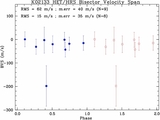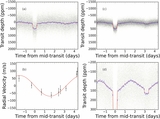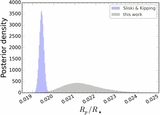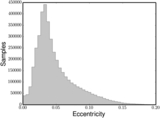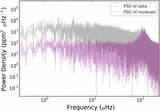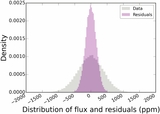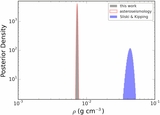Image Details
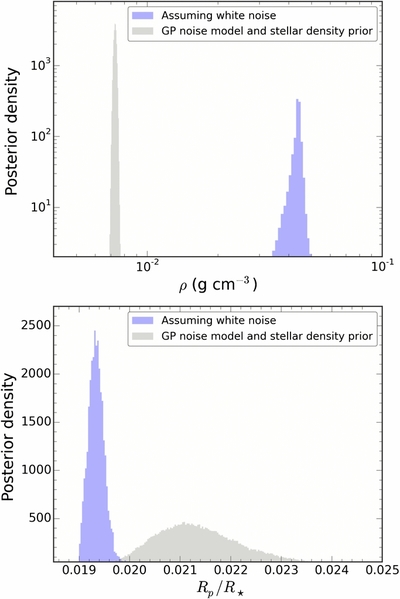
Caption: Figure 10.
Two panels show a comparison of our posterior model parameters when using the Gaussian Process noise model and a prior on the stellar density from the asteroseismic constraint with the posterior when assuming no time correlated noise. The upper panel shows the mean stellar density, ρ, while the lower panel shows the planet-to-star radius ratio Rp/R![]() . Our posteriors when not including the correlated noise mirrors the results of Sliski & Kipping (2014) but when we include the noise model our results are consistent with the conclusion we must draw from the radial velocity data that Kepler-91b is a planet.
. Our posteriors when not including the correlated noise mirrors the results of Sliski & Kipping (2014) but when we include the noise model our results are consistent with the conclusion we must draw from the radial velocity data that Kepler-91b is a planet.
Copyright and Terms & Conditions
© 2015. The American Astronomical Society. All rights reserved.



